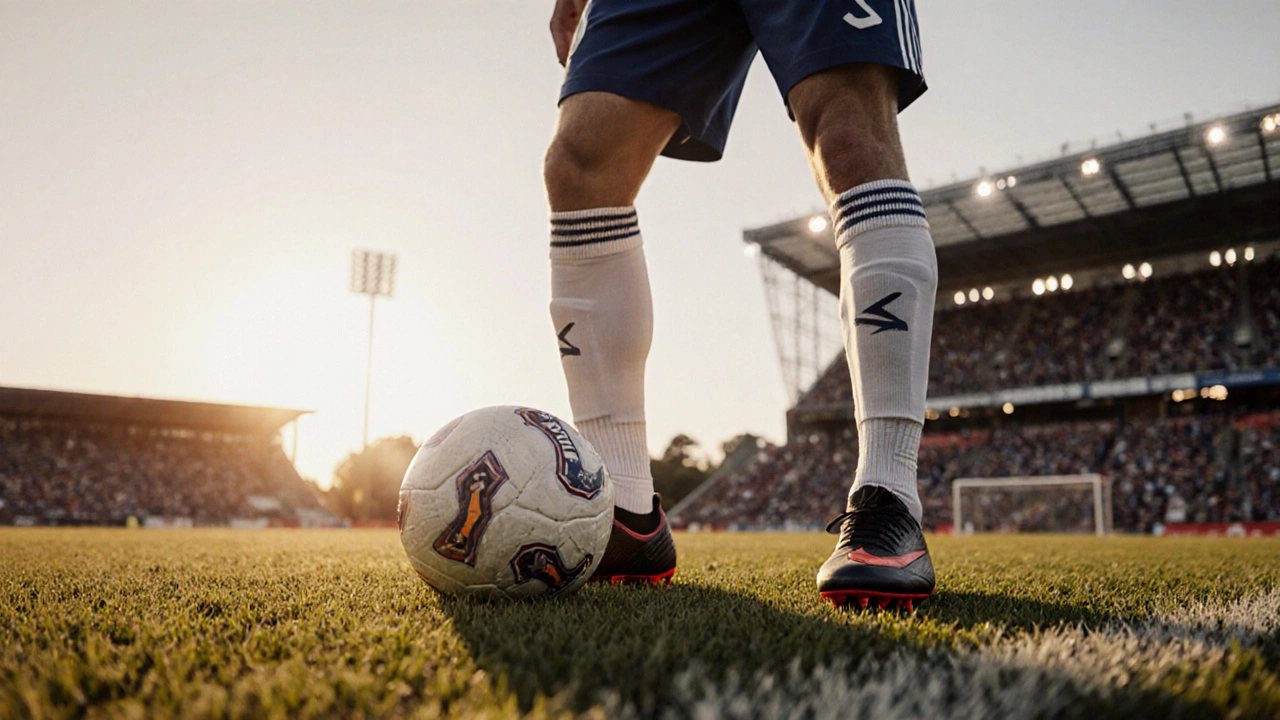Soccer Ball – Everything You Need to Know
When you talk about Soccer Ball, the round leather or synthetic ball used in association football. Also known as football, it drives the game, from backyard kick‑abouts to professional stadiums, you’re really looking at a piece of Sports Equipment, any gear that helps athletes perform that hinges on its Ball Material, typically synthetic leather, polyurethane or PVC layers that affect grip and durability. The first soccer balls were made of pig‑skin and stitched by hand; modern versions use a blend of foam, polyester, and textured panels to stay stable in rain or heat. The classic 32‑panel design, popularized by the 1970 World Cup, gave a predictable flight path, but today’s 6‑panel, thermally‑bonded shells reduce seams and improve aerodynamics. Panel shape, surface texture, and the number of seams all influence how the ball cuts through the air – a clear example of design meeting physics. Inside, a latex or butyl bladder holds the pressure that determines bounce height and how the ball feels on a player’s foot. In short, a soccer ball combines design, science, and craftsmanship to deliver consistent performance on any surface, whether it’s a frozen pitch or a sun‑baked park.
Why the Physics Behind the Bounce Matters
Understanding the Physics of Ball Bounce, how compression, elasticity, and surface interaction shape the rebound helps players choose the right pressure and manufacturers meet strict standards. When a player strikes the ball, the outer panels compress, the bladder stores energy, and then releases it as the ball leaves the foot. The coefficient of restitution – a measure of how much energy is retained – is directly linked to the material mix and the bladder’s elasticity. FIFA mandates a pressure range of 8.5–15.6 psi; staying near the middle (about 12 psi) gives a balanced feel: soft enough for controlled dribbling, firm enough for precise long passes. Ambient temperature also shifts pressure – a ball can lose a few psi on a cold afternoon, making it feel heavier and less responsive. Coaches teach the “toe‑press test”: press the ball with the toe; it should give slightly but snap back quickly. This simple feel check mirrors laboratory tests where a ball is dropped from a set height and the rebound height is measured. By tweaking foam thickness, stitching technique, and panel curvature, manufacturers fine‑tune the bounce to suit different climates and playing styles.
From the factory floor to the training ground, every decision – where the ball is made, which supplier provides the panels, or how the surface is maintained – impacts gameplay. Our hub’s articles dig into where most sports equipment is produced, what sets high‑quality gear apart, and how you can test a ball’s durability before buying. For a buyer, the checklist includes checking the FIFA logo, feeling the panel texture, confirming the bladder type, and measuring the exact pressure with a gauge. Maintenance matters too: cleaning the ball with a mild soap solution removes grit that can wear the surface, while storing it in a cool, dry place prevents the bladder from expanding or cracking. Some players use a ball‑pump with a pressure gauge to keep the pressure steady week after week, especially during long training cycles. Whether you’re a weekend player, a coach planning drills, or a gear enthusiast curious about materials, the insights below will help you pick, care for, and get the most out of your soccer ball. Below you’ll find a curated collection of articles that dive deeper into equipment manufacturing, quality characteristics, and practical training tips.
Understanding Soccer Equipment: Essential Gear for Every Player

Learn what soccer equipment includes, from essential gear like balls and cleats to optional accessories, plus buying tips, safety standards, and care advice.
